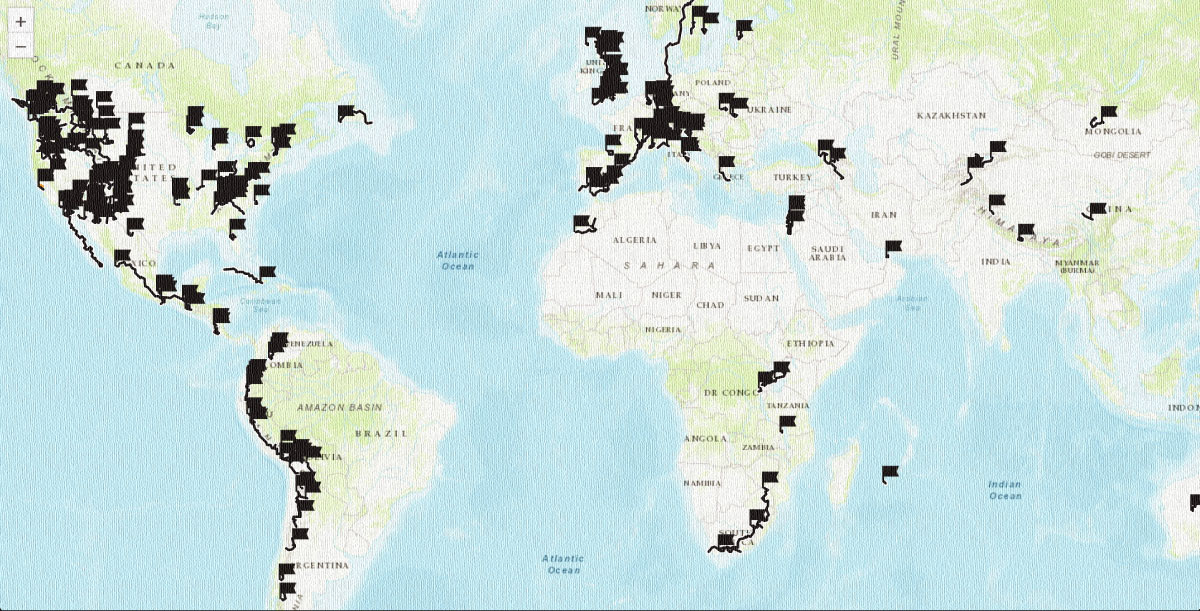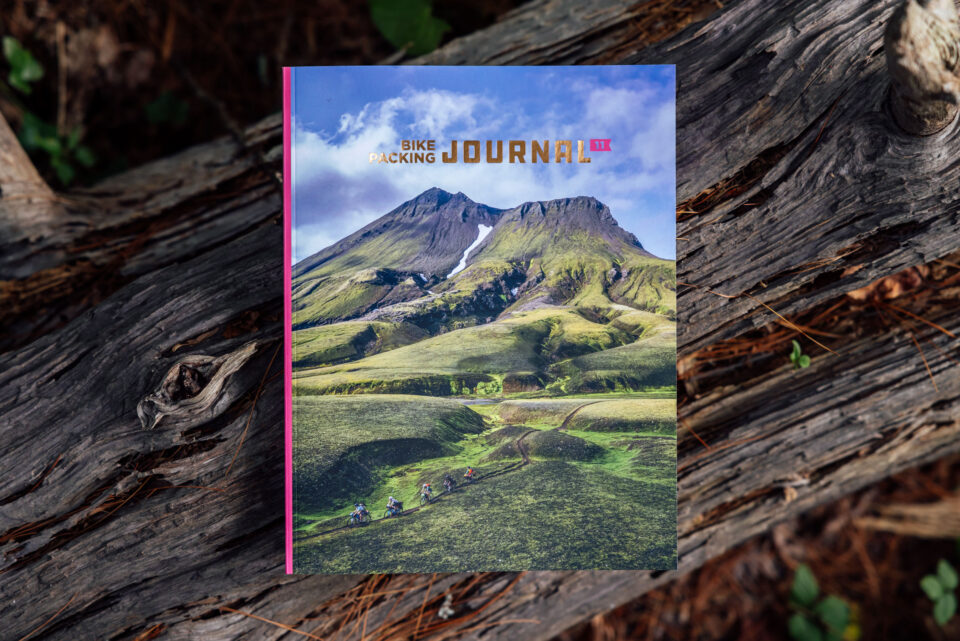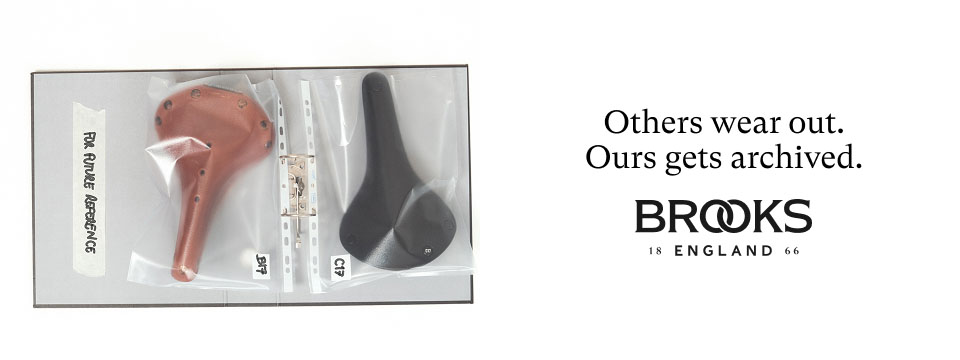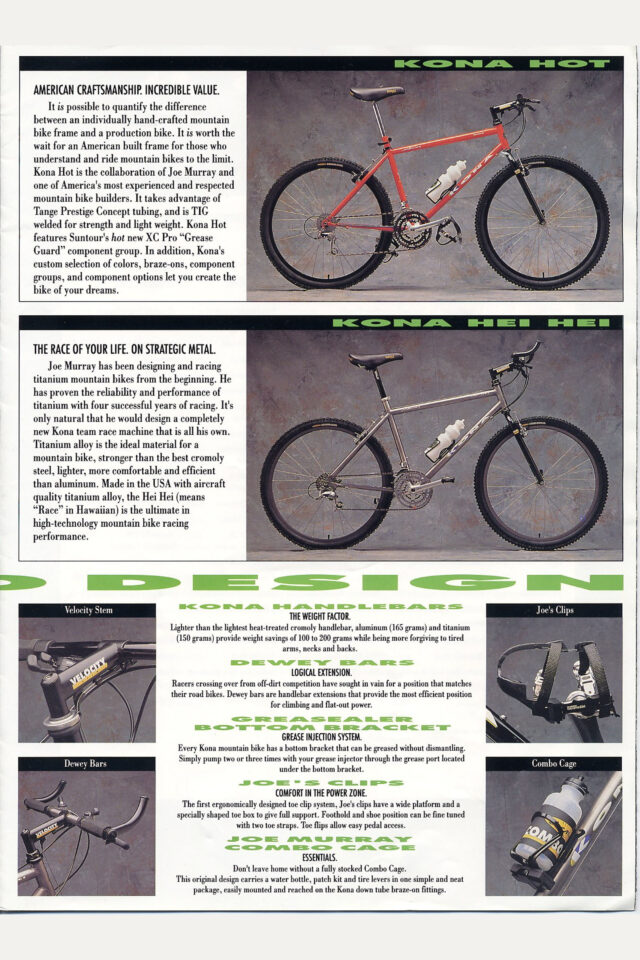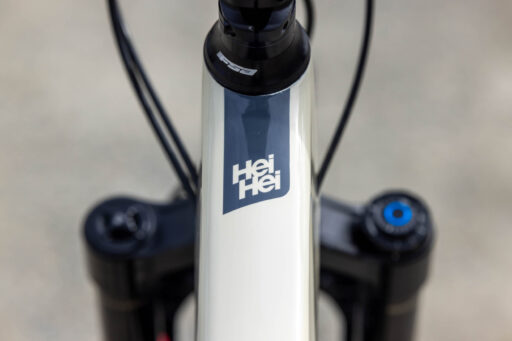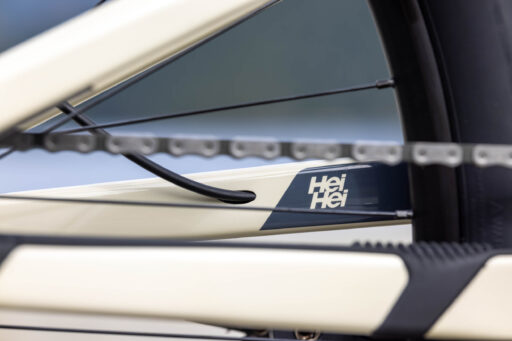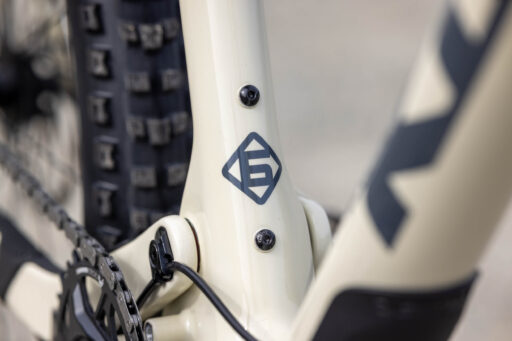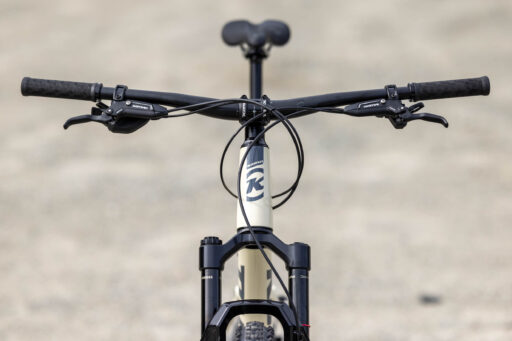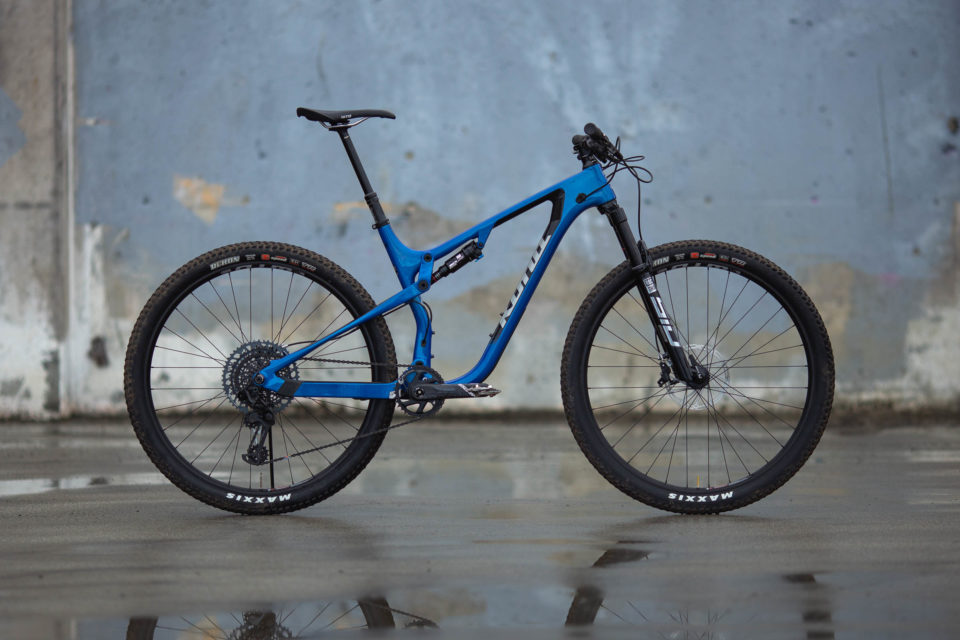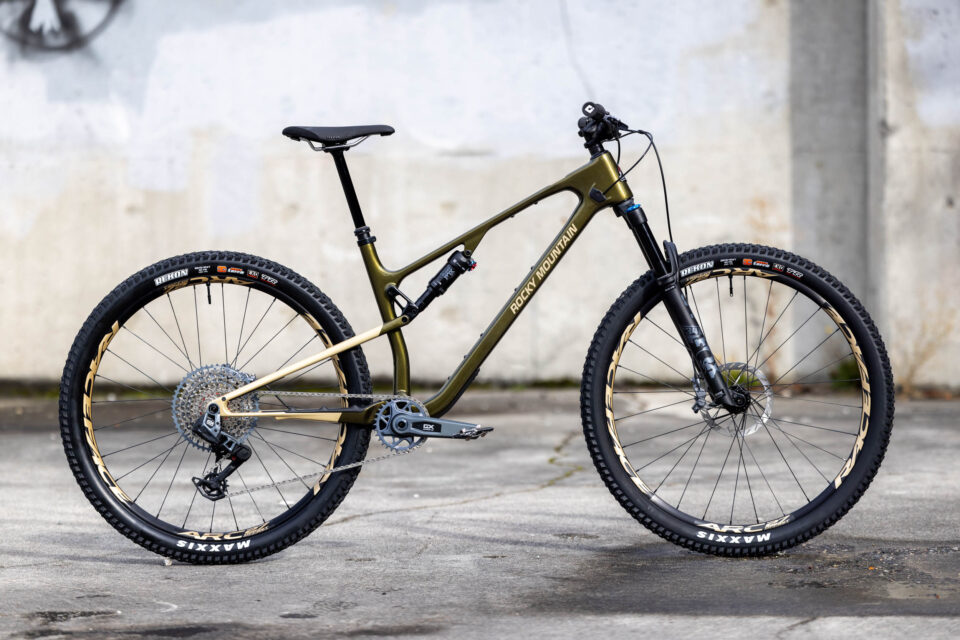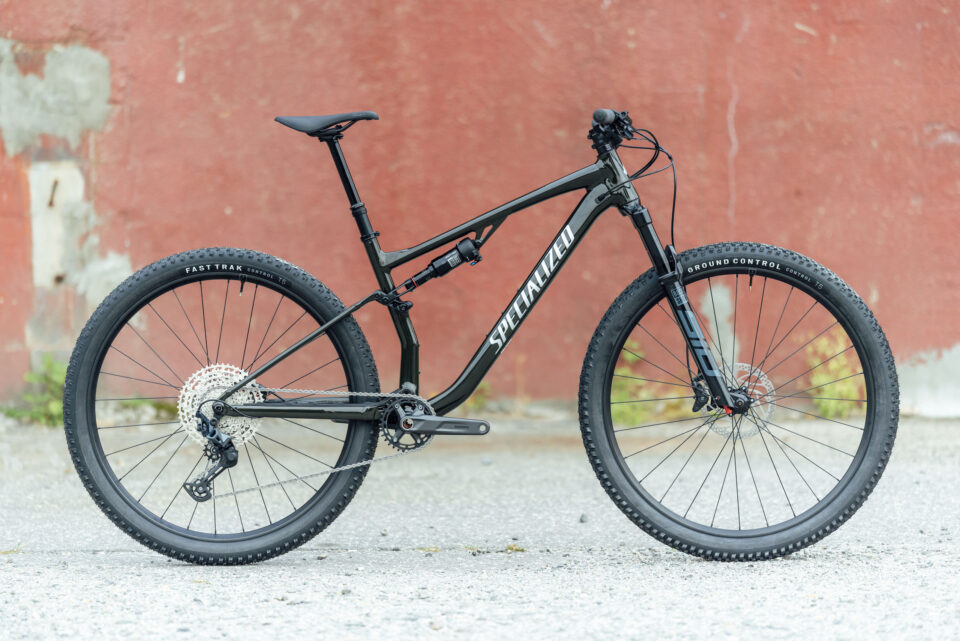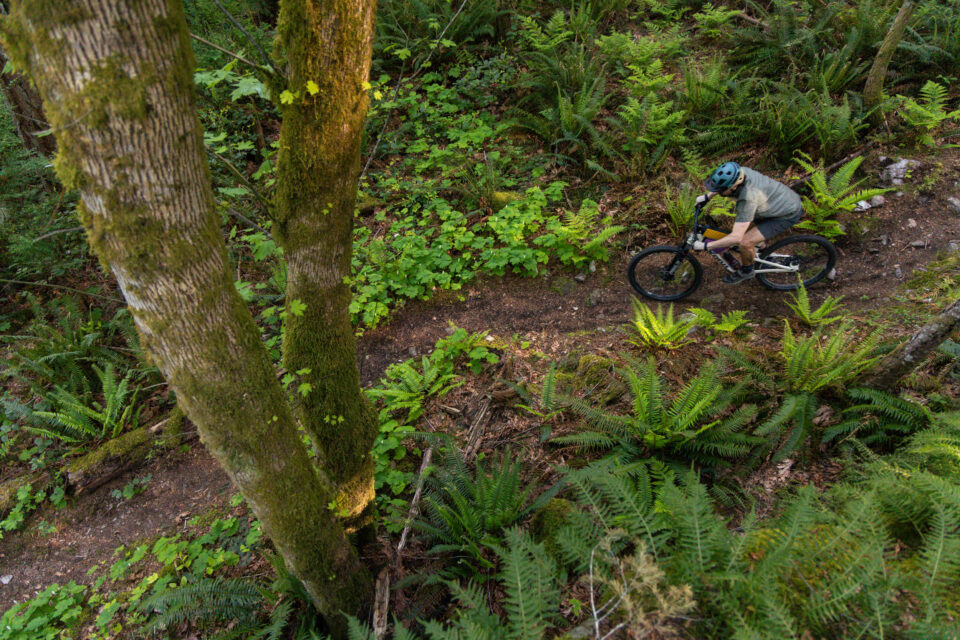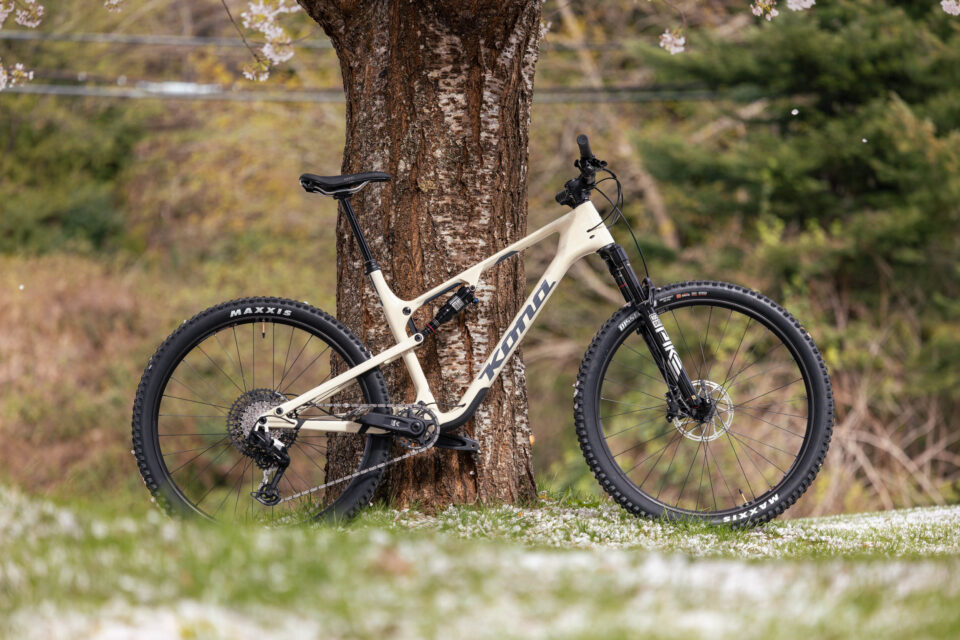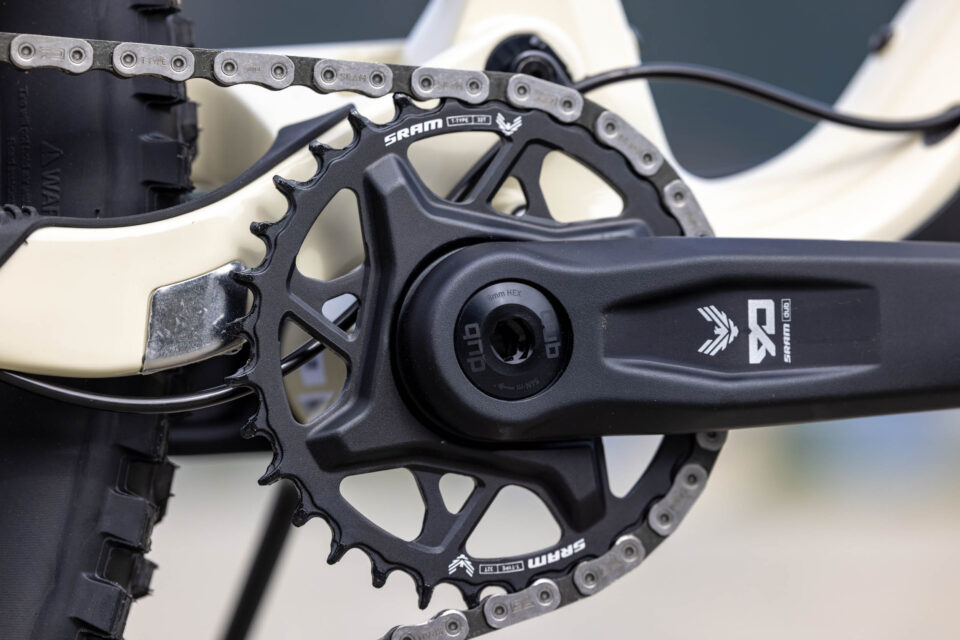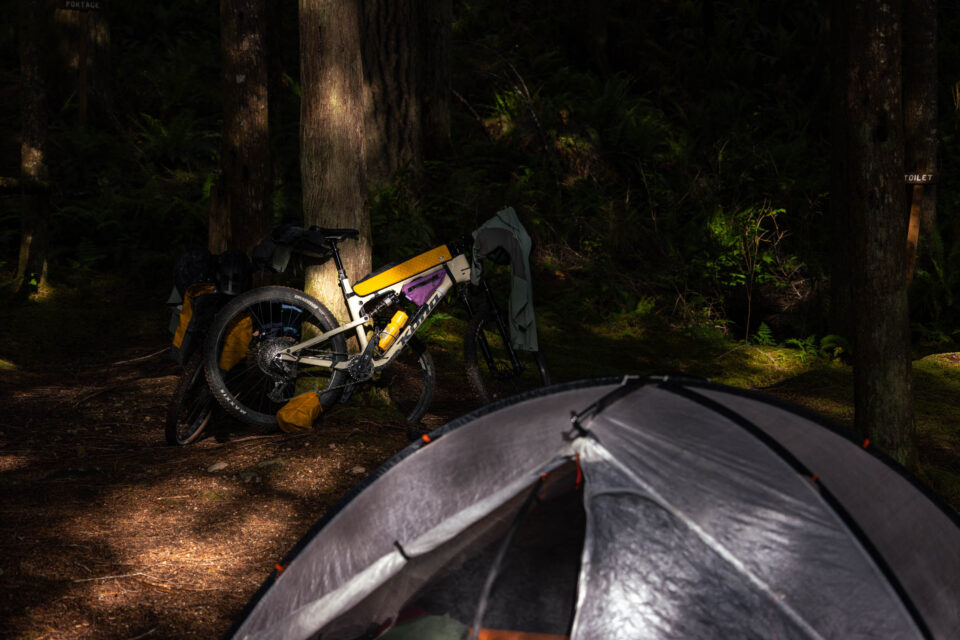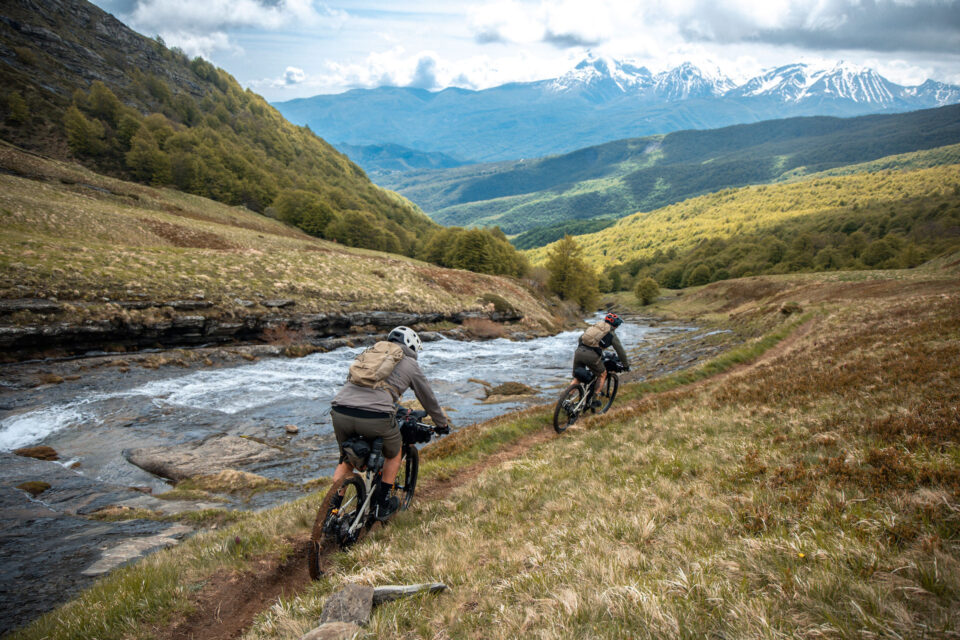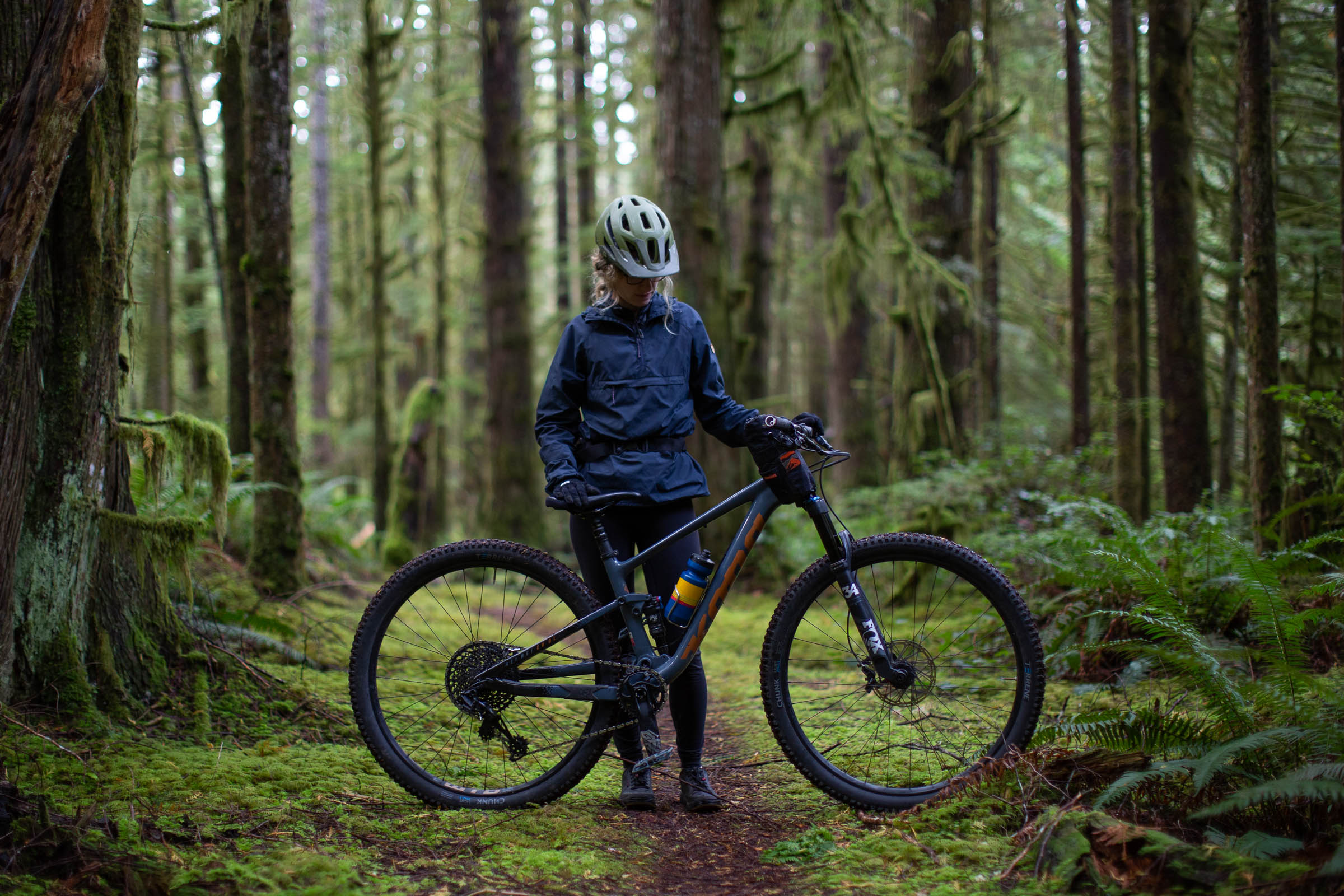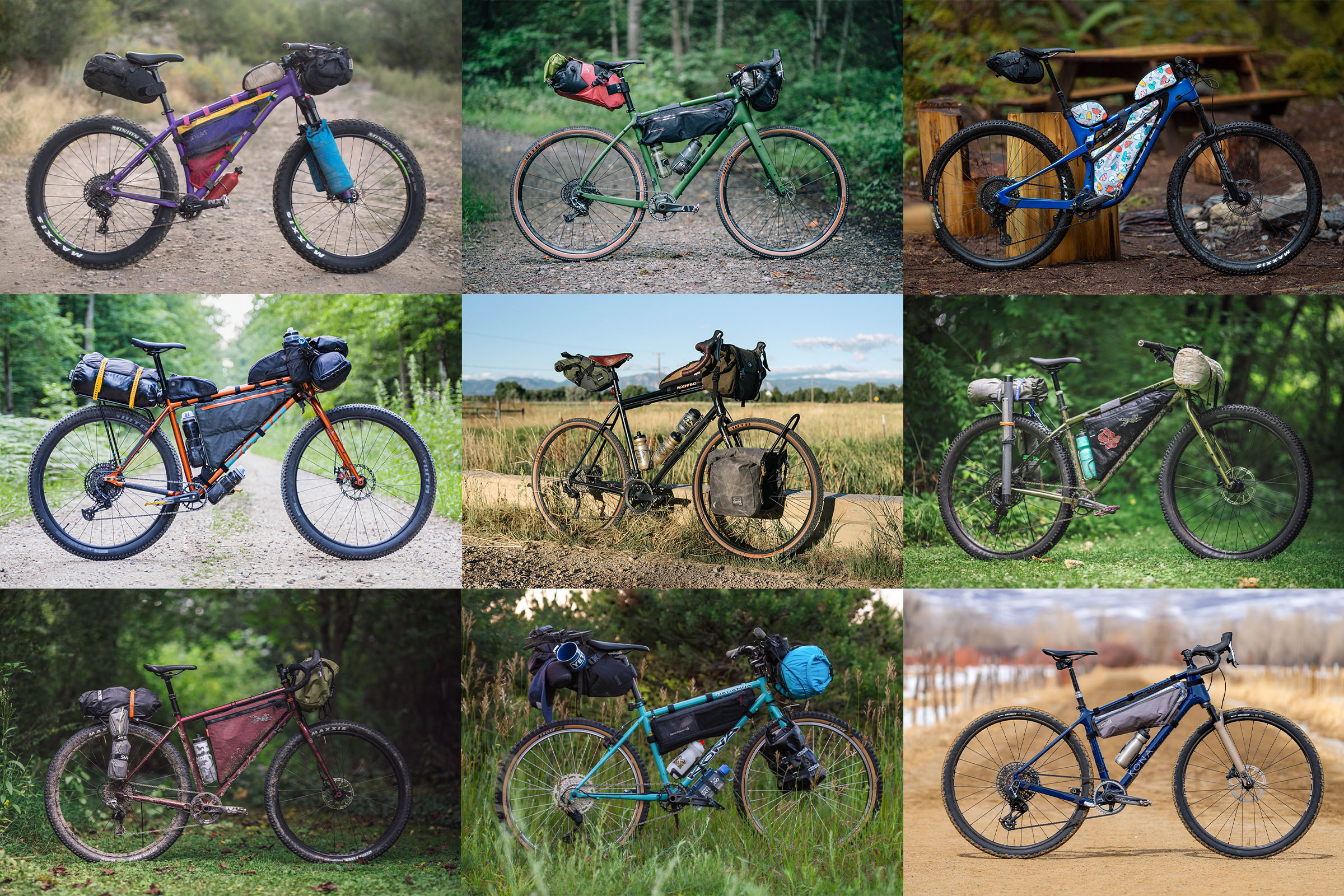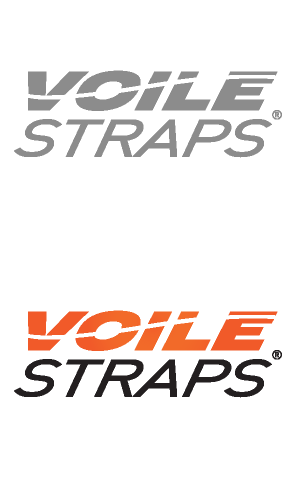2025 Kona Hei Hei Review: Tenth Time’s a Charm
With nearly two decades of history, the Kona Hei Hei has established its reputation as a well-rounded full-suspension mountain bike. New for 2025, the tenth-generation Hei Hei has been redesigned from the ground up with more progressive geometry, increased travel, and nine mounts inside the main triangle. Find Miles’ 2025 Kona Hei Hei review here after several months of day rides and loaded bikepacking trips in the province where Kona was born…
PUBLISHED Jun 3, 2025
Kona is back! Or maybe they never left? Around this time last year, Kona fans were left wondering what the future of the brand would look like after employees set up for the 2024 Sea Otter Classic and then promptly packed up and left. We’re still not sure what happened that month, but it ended up back in the hands of Kona’s original founders, Dan Gerhard and Jake Heilbron, who bought back the company from Kent Outdoors, a large umbrella brand with no current ties in the cycling industry.
With almost four decades of business experience behind them and strong ties to the Canadian mountain bike scene, it’s exciting to see the Kona brand continue to live on. It’s especially promising to see it return to the originators and remain the “fiercely independent company” they set out to create back in 1988. This new chapter is already shaping up to be bright, including pausing all direct-to-consumer sales and reinvigorating relationships with many local retailers. We haven’t shared much from Kona since the reacquisition, aside from the new Ouroboros gravel bike and the recent redesign of the Libre lineup, making the new Hei Hei that much more exciting.

The Tenth Generation Kona Hei Hei
The Kona Hei Hei has been in Kona’s lineup for nearly two decades. It debuted in 1991 as a titanium hardtail with rim brakes, then as a scandium full-suspension rig, and more recently as a carbon full-suspension cross-country mountain bike. In 2020, the Hei Hei received a major update that included modernized geometry, updated kinematics, more travel, clearance for larger tires, and a new rear shock position. It caught our eye as a serious light and fast bikepacking rig, and I spent four months testing it in a variety of conditions, loaded and unloaded.
With Kona’s future feeling somewhat uncertain over the last few years, I lost track of their lineup and what bikes are due for an update. In 2022, Kona released updated build kits and colors, but otherwise, the Hei Hei has remained unchanged since 2020. The 2025 Hei Hei marks the 10th generation of the Hei Hei lineage, a claim that only a handful of brands can say they’ve reached.
So, what’s new? The 2025 Kona Hei Hei’s identity is very similar to the model I tested in 2021. It still has clearance for 29 x 2.5″ tires, a lightweight carbon frame, 120mm of rear travel, and a roomy main triangle thanks to a horizontal shock placement. Although, at first glance, it might look like the same bike, many small changes add up to a fairly significant update. It’s now designed around a 130mm travel fork (up from 120mm), the rear shock’s carbon rocker link has been replaced with a slimmed-down aluminum linkage, the curved seat tube has been straitened to increase dropper post depth, and the main triangle was updated with a whopping nine bosses for multiple bottles or bolt-on accessories/bags. But that’s not all.
The previous generation Hei Hei favored a flex-stay over an axle pivot, which meant less maintenance and potential failure points (and a delightfully responsive ride quality). For 2025, the rear end of the Hei Hei has been redesigned to include an axle pivot instead of relying on the flex of the seatstays. With this, the seatstays have thickened up slightly, and the chainstays have slimmed down, likely to accommodate the new linkage-driven single-pivot rear suspension design. Other updates include a SRAM UDH rear dropout, offset chainstays, cleaner cable routing through the downtube/chainstays, and new geometry.
Geometry and Comparisons
Compared to the previous generation, the 2025 Hei Hei has a longer front end, a 1.5° slacker head tube angle, a slightly steeper seat tube angle, and a longer wheelbase. Recently, the area between downcountry and modern XC bikes has become increasingly blurry, and the latest Hei Hei only adds to the confusion. The changes are right on trend with other cross-country bikes that have shifted further into the downcountry realm as riders continue to demand more of their bikes, but it leans ever so slightly toward the XC side, staying true to its roots.
| Size | SM | MD | LG | XL |
|---|---|---|---|---|
| ST Length | 380 | 410 | 450 | 490 |
| TT Length | 575 | 605 | 633 | 671 |
| Reach | 424 | 449 | 474 | 509 |
| Stack | 606 | 620 | 630 | 639 |
| Standover | 752 | 752 | 753 | 755 |
| HT Angle | 66° | 66° | 66° | 66° |
| HT Length | 105 | 120 | 130 | 140 |
| ST Angle | 76.1° | 76° | 75.9° | 75.8° |
| CS Length | 435 | 435 | 435 | 435 |
| BB Drop | 31 | 31 | 31 | 31 |
| BB Height | 344 | 344 | 344 | 344 |
| Wheelbase | 1163 | 1194 | 1223 | 1262 |
| Front Center | 730 | 761 | 790 | 829 |
| Fork Length | 542 | 542 | 542 | 542 |
| Fork Offset | 44 | 44 | 44 | 44 |
I spent a fair amount of time riding the previous generation Hei Hei, which saw its last update in 2020, and while it caters to similar riders, the two iterations feel like drastically different bikes. I was a little worried that moving away from the flex-stay suspension design would mean less responsiveness and efficiency, but thankfully, those pedaling characteristics transfer over to the 2025 Hei Hei. Kona built the previous generation to be fast and light; the large I tested weighed just 25.8 pounds (11.7 kilograms) and was specced with a handful of lightweight carbon parts. The 2025 model weighs just over 30 pounds (13.6 kilograms) and favors metal components and strength over weight savings.

While riding, it gives the impression of a larger trail bike (and that’s not just because I sized up to an XL) but handles like a cross-country bike. I was happy to see a touch more stack, more steerer tube, and a handlebar with some rise, which provided a much more comfortable all-day riding position compared to the 2020 Hei Hei I tested. I opted for an XL frame, though I actually sit somewhere between a large and an extra-large, making it unusually difficult to pick a size. I’m fairly comfortable sizing up, sitting at 6’1″ with a 33″ inseam, but there’s a big gap between the two sizes. For example, the extra-large I tested has a 671mm effective top tube, compared to just 633mm on the large. For those searching for a new bike, it’s worth looking at the reach/effective top tube, as some might consider sizing down and running a longer stem rather than the opposite.
The new Hei Hei falls into a similar category as other modern full-suspension cross-country bikes, such as the Specialized Epic Evo, Santa Cruz Tall Boy, new Revel Ranger, and Trek Top Fuel. Coincidentally, one of the most comparable bikes is the redesigned Salsa Spearfish Neil reviewed (pictured below). Comparing the large frames on Bike Insights shows many near-identical numbers and angles, a slightly steeper seat tube on the Spearfish, and more stack on the Hei Hei. Otherwise, the chainstay length, head tube angle, wheelbase, and bottom bracket position are almost identical across the size range. That is, until the extra-large Hei Hei, which is longer and taller than the Spearfish but still comparable.
Neil described the Spearfish as being incredibly inspiring—from technical descents to smooth singletrack—fleet-footed, fast, and capable. Knowing the Hei Hei was one of its closest competitors, I took it to my local trails here in the Pacific Northwest to find out just how similar these bikes really are.

Hei Hei, Go Go!
I was most interested to see how the new Hei Hei stacked up against the previous generation Hei Hei I reviewed and my Rocky Mountain Element, which is my daily driver for the steep and rowdy stuff on British Columbia’s Sunshine Coast. As for their geometry, all three bikes are fairly similar. On paper, the Element leans slightly further toward the trail side of cross-country riding, the previous generation Hei Hei was inherently sporty, and the 2025 Hei Hei finds itself somewhere in between. The long top tube on the extra-large I tested probably would have caught me off guard if it wasn’t for an increase in stack and standard low-rise handlebars, but as it was, the 2025 Hei Hei provided a riding position that was more reminiscent of my Element than a racy cross-country rig.
As expected, I found the 2025 Kona Hei Hei to align quite closely with Neil’s thoughts on the Spearfish. Despite a relatively high bottom bracket (31mm drop), its long wheelbase created a planted and surefooted ride quality on both climbs and descents. What stood out was how adept the bike felt in nearly all situations. With the 120mm travel RockShox Deluxe Ultimate shock in the “open” position, the bike felt supportive and predictable barreling down trails and gliding over rock gardens at speed.

In the “pedal” position, there were times when I had to remind myself I was riding a full-suspension mountain bike, which was perhaps one of my favorite things about the Hei Hei. It’s hard to imagine this was because of any one thing: suspension design, suspension setup, or the bike itself—more likely a combination of all three. Whatever it was, it felt fantastic. Over the last few months, I reached for the Hei Hei instead of a hardtail mountain bike, which would normally be my go-to choice for rides on varied terrain. Neil described similar feelings riding the latest Salsa Spearfish.
What sets bikes like the Hei Hei and Spearfish apart from other XC bikes in this category, and I’ll quote Neil for this one, “…is its front-center length and how it offers a level of stability you don’t usually get in this class.” They’re still XC bikes at heart but play into their downcountry identities in a way that makes them even more suited for loaded riding and big days out than shorter, zippier XC bikes.
As a Full-Suspension Bikepacking Rig
Modern hardtail mountain bikes are incredibly capable these days, making it hard to imagine choosing a full-suspension bike over something with fewer moving parts and similar technical capability—especially when it comes to bikepacking. After all, a progressive hardtail can handle the same types of terrain, albeit sometimes with a little less speed. Most full-suspension mountain bikes are also more difficult to pack. They have no rack mounts and fewer rear rack options, and they typically have less frame bag space. Plus, just having rear suspension can limit or impede the ability to use a dropper post due to the lack of space between the saddle and rear tire. Having fallen in love with modern hardtails, the big one for me is that full-suspension bikes generally don’t pedal as well or efficiently as hardtails, which can feel sluggish when loaded up for a big backcountry ride or bikepacking trip.

Bikes like the recently reviewed Salsa Spearfish, 2025 Rocky Mountain Element, Specialized Chisel, and the new Kona Hei Hei challenge the assumption that full-suspension bikes aren’t worthy of being a bikepacking-forward bike. Like these others, the Hei Hei covers ground quickly and efficiently while reducing the rider fatigue. The ability to move swiftly and comfortably over long distances is an important factor when deciding what makes a good bikepacking bike, and for me, the Hei Hei accomplishes that.
The Hei Hei’s long, stable platform felt great loaded up with gear, and the large main triangle is begging for a custom framebag or multiple bottles. That said, I thought I’d be able to fit a small bottle with a multi-position cage on the seat tube bosses, but there wasn’t quite enough room below the shock. I think a better option would be the tiny 450ml Fidlock TWIST bottle/mount, which would be great for big rides. I ended up running a bottle cage in the lowest position on the downtube, mounted a tiny Wolf Tooth 40cc EnCase pump above that, and then snuck in a cute little wedge frame bag made by GURP here in Canada.
Thankfully, Kona includes nine threaded bosses inside the main triangle for bottles, accessories, mounts, and bags, so it can be set up in a variety of ways. The only downside to the new frame shape is that there’s slightly less room inside the main triangle now, especially when compared to the Salsa Spearfish, which clearly prioritizes space for bottles and bags. To put that into perspective, my old Rogue Panda Designs custom frame bag, which was made for the large 2021 Hei Hei I tested, was slightly too large for the new XL frame.
Set up for a lightweight, warm-weather spring overnighter, I opted for a tiny Rockgeist Gondola dropper post bag, an extra-long top tube bag from Rogue Panda Designs to take advantage of that low and flat top tube, and a Dispersed Handlebar Roll. To expand my carrying capacity, it would have been easy to add bottle mounts to the fork legs, strap on a downtube cargo bag, or run a larger dropper post bag or axle-mounted rear rack, but there’s something special about a lightly loaded full-sus bike.

The combination of a long wheelbase, efficient pedaling characteristics, and categorically high stack height made for a comfortable riding position for long multi-day rides. If I was heading out on a longer trip, I’d likely swap the stem for something even shorter or experiment with handlebar sweep. As mentioned earlier, the extra-large Hei Hei is longer than average, and the size large is smaller than average, so make sure to take that into consideration if you’re in the market for a new bike.
2025 Kona Hei Hei G10 Build Kit
Top-tier bikes come specced with equally fantastic components, and the Hei Hei G10 is no exception. What is unique is how the build subtly pays homage to the history of the brand and its start in coastal British Columbia. Sure, there are some flat, smooth cross-country trails around, but that’s not really what western BC is known for. It would be more accurate to describe the majority of mountain biking on the province’s coast as steep, rocky, and rooty. And, for more than half of the year, it’s slippery as hell.
Most cross-country and downcountry bikes come equipped with fast-rolling tires and lightweight components that work well in some parts of the world but not here. When you’re barreling down a tight trail with ferns cascading around you and a wet root (aka butter snake) pops up out of nowhere on a 45-degree angle, it’s not your “low rolling resistance” tires that will keep you upright.
Instead of appealing to the speed over all else crowd, Kona specced a build suitable for riding in the region where the brand was born. Starting at the dirt, the Hei Hei G10 comes specced with 29 x 2.4″ Maxxis Dissector tires, which are far burlier than what most bikes in this category receive. Despite their “trail/downhill” categorization, I found the Dissector to be perfectly suited to the Hei Hei, with a raised center tread that was fast enough to never feel sluggish, even on pavement and gravel roads. More importantly, the generous side knobs grabbed into loose, loamy terrain with ease and gave me a fighting chance to remain in control on rooty climbs and slick descents.
- Frame: Kona Carbon
- Fork: RockShox Pike Ultimate Charger 3.1 RC2 130mm
- Crankset: SRAM Eagle 90 32T
- Derailleur: SRAM Eagle 90 Transmission
- Shifter: SRAM Eagle 90 Transmission
- Cassette: SRAM Eagle 90 Transmission 10-52T
- Bottom Bracket: SRAM DUB PF92
- Front Hub: DT Swiss 370 110x15mm
- Rear Hub: DT Swiss 370 148x12mm
- Rims: WTB KOM Team i30 TCS 2.0
- Front Tire: Maxxis Dissector EXO TR 29 x 2.4″
- Rear Tire: Maxxis Dissector EXO TR 29 x 2.4″
- Headset: FSA No.57E
- Handlebar: Kona XC/BC 35
- Stem: Kona XC/BC 35
- Grips: Kona Key Grip
- Saddle: WTB Volt
- Seatpost: TranzX Dropper +RAD Internal 31.6mm
- Seat Clamp: Kona Clamp
- Dropper Lever: TranzX
- Brake Levers: SRAM Motive Bronze
- Brake Calipers: SRAM Motive Bronze 4-Piston
- Rotors: SRAM Centerline 180mm
Working our way up, it was a pleasant surprise to find the newly released mechanical SRAM Eagle 90 Transmission drivetrain, the new SRAM Motive brakes, WTB rims, and OEM DT Swiss 370 hubs. The Hei Hei’s suspension game is top-notch, thanks to a RockShox Deluxe Ultimate rear shock and RockShox Pike Ultimate fork—with the latter enabling it handle bigger hits with much more confidence on gnarly trails compared to the previous version with a RockShox SID. Despite some extra weight and the lack of a true lockout switch, I have no complaints about the bike’s ability to pedal. It simply goes!

This was my first time using the new Transmission 90 mechanical drivetrain. Although I personally prefer it over the wireless version, I quickly learned it is extra sensitive when using a handlebar bag. I used the Dispersed Handlebar Bag on my first bikepacking trip, but I found it compressed the shifting housing threw it totally out of whack. I switched to the Rogue Panda Blue Ridge Harness for my final campout, and while it improved, the shift quality was still quite sensitive to perfect cable routing. This is generally an issue with modern mountain bikes pushing the cable ports closer toward the front of the bike and the angle at which the housing enters the frame, but I haven’t experienced so much clunky shifting with a mechanical drivetrain before. Expect to take your time packing and dialing in your setup to preserve the crisp shifting Transmission 90 offers.
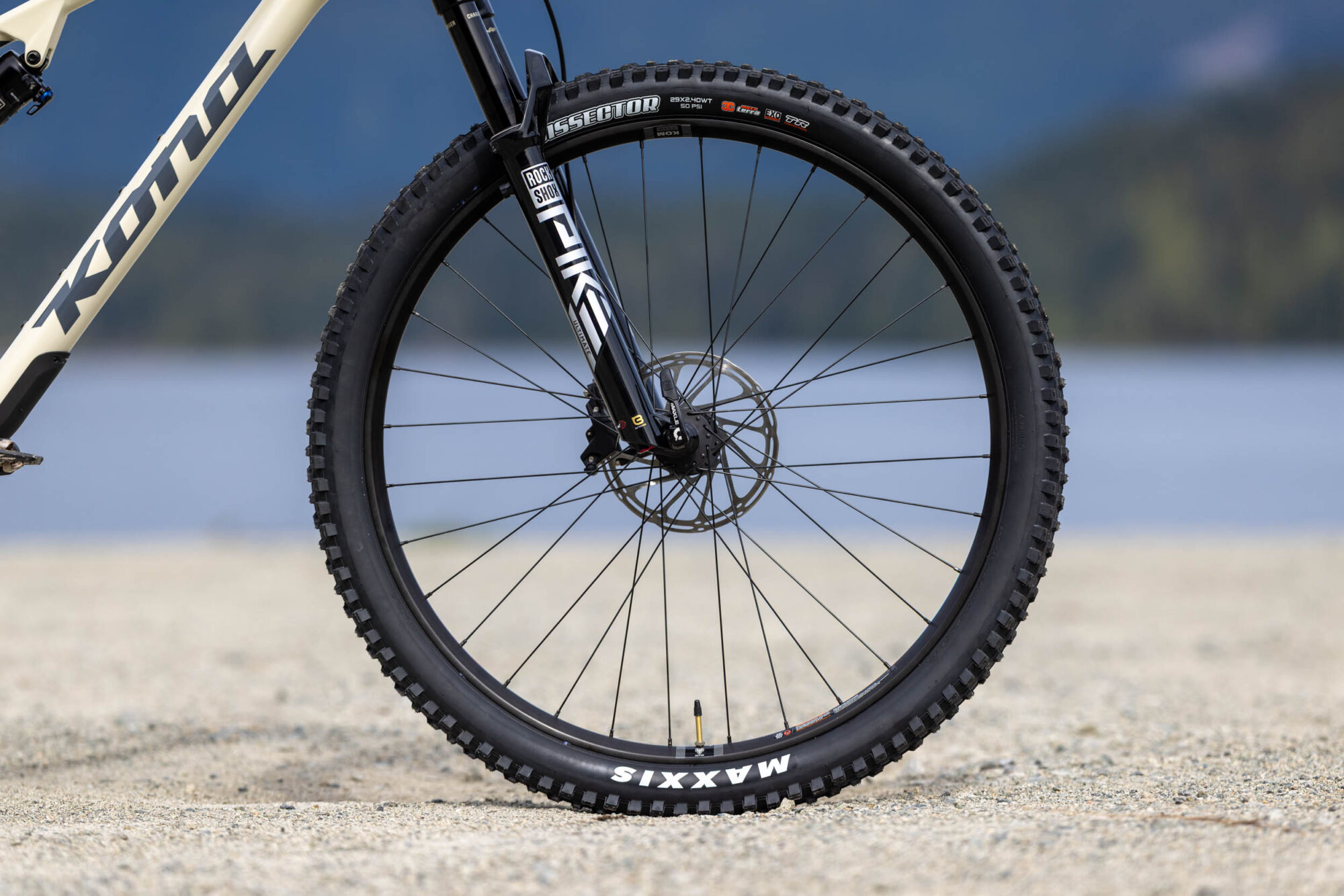
It’s slightly disappointing to see the new Hei Hei only available in the one build, but I can only hope they’re working on changing that. As laid out, it offers a fantastic package for the price. At $5,299 USD (not including the reciprocal tariff rate) or $7,499 CAD, the 2025 Hei Hei is over $1,000 less than the top-end 2021 Hei Hei I reviewed, and I greatly prefer the component selection on the new version. The Salsa Spearfish’s Eagle 90 Transmission build is priced comparably at $5,399 but comes with a lesser RockShox SID Select+ fork, RockShox SIDLuxe Select+ shock, SRAM DB8 brakes, and lower-end hubs. Side by side, the Kona Hei Hei offers more value for the price.
Montanus’ Take on the Kona Hei Hei
I recently saw that Kona ambassadors Francesco D’Alessio and Giorgio Frattale (aka Montanus) had picked up some new Hei Heis to help explore the mountains in southern Italy. We’ve shared many pieces from Montanus here on the site, but they’re usually riding fully rigid Kona Unit Xs, so I was curious to get their thoughts on the transition. Read their thoughts on their new full-suspension bikepacking setups below.
Montanus: We’re hopelessly addicted to the mountains, and the new Kona Hei Hei CR has reignited our mountain instincts and our craving for alpine singletrack—the kind where love and hate have always gone hand in hand: grueling climbs followed by breathtaking descents. Compared to our rigid Unit X setups, this bike delivers a completely different approach—one that emphasizes riding enjoyment, especially on the descents, without compromising efficiency on technical climbs.

We’re currently testing various minimalist bag setups. Thanks to the nine mounting points on the frame, we’re able to mount a bolt-on framebag, custom-made by Walkman Gear, eliminating the need for straps and ensuring a clean, secure fit. In terms of geometry, we particularly appreciate the increased reach and slacker head angle, along with the steeper seat tube, which, in our opinion, make the bike more playful and better balanced than the previous version—both uphill and down.
Another detail we like is the extra clearance between the shock and the top tube, which now allows you to slide your hand through and lift the bike more easily during those tough hike-a-bike sections common on high-alpine routes. It might seem like a minor thing, but trust us, it’s not. This July, we’ll be putting the Hei Hei CR to the test on the singletrack trails of Oregon during our first overseas bikepacking trip with full-suspension bikes.
- Model/Size Tested: 2025 Kona Hei Hei G10, Size XL
- Actual Weight: 30.5 pounds (13.8 kilograms)
- Place of Manufacture: Taiwan
- Price: $5,299 USD
- Manufacturer’s Details: KonaWorld.com
Pros
- Responsive and entertaining ride quality on all types of terrain
- Fast like an XC bike but not a one-headed beast
- Perfect mix of fast and stable, making for a perfect ultra-distance race bike or lightweight bikepacking rig
- Large main triangle and plenty of mounting points for bolt-on cargo/bags
- Extra space above the rear shock makes a perfect handle
- Single build kit offers decent bang for your buck despite being expensive
Cons
- Only one complete build kit (for now)
- Expensive
- Press-fit bottom bracket
- Size jump between large and extra-large frame is awkward
- Headtube cable routing/ports can be tricky for some handlebar bags
Wrap Up
At its heart, the 2025 Kona Hei Hei captures the essence of what a British Columbia cross-country bike should be. For trail mountain bikers, it’s going to offer a familiar sense of stability and capability that makes it balanced and capable of tackling steep climbs and rough descents. Its efficiency and responsiveness feel equally at home on the endless gravel roads and doubletrack we have here, which is exactly how I finished off my testing of the bike. Instead of reaching for a hardtail or gravel bike to take on the 10 Lakes Overnighter this past weekend, I took a slight chance and loaded up the Hei Hei for 100 kilometers (64 miles) of gravel bliss. This trip solidified many of my thoughts on the Hei Hei and how incredibly versatile mountain bikes can be given the right combination of geometry, frame design, and components. Zipping along with friends on much skinnier tires but with all the comfort of a full-suspension mountain bike, it was hard to imagine ever wanting to suffer on a rigid bike ever again.
Despite living in an age where all new bikes are mostly great, no bike is perfect. The Hei Hei’s main triangle isn’t quite as spacious as the Salsa Spearfish’s, it still has a press-fit bottom bracket (which might bug some people), and the real downside in my eyes is the single build kit Kona offers. Perhaps this is the outcome of a rocky few years for the brand, but a $5,000+ mountain bike will be out of reach for many people. It would great to see more build options, or even an alloy option to really bring the price down and lower the barrier to entry for this capable and engaging style of bike.
Further Reading
Make sure to dig into these related articles for more info...
Please keep the conversation civil, constructive, and inclusive, or your comment will be removed.


